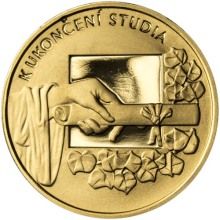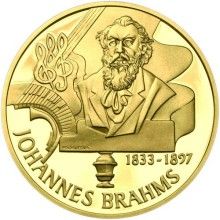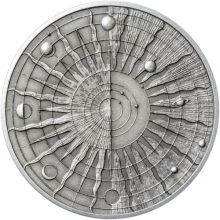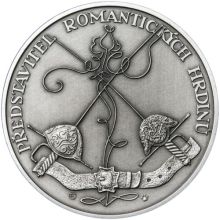NEALE, THOMAS (Brit.). Mint-master at the Royal Mint, London, circ. 1678- 1699, and succeeded in that office by Sir Isaac Newton. He was called the Projector, and became famous for his system of lotteries, which he founded in 1694, on the principle of those existing at that time at Venice. His signature, N. C. A. P. (Neale, Custos Artifex Primus) occurs on medals by F. D. Winter, commemorating the Landing of William of Orange at Torbay, 1688; — William's landing in Holland 1691; — His triumphal Entry into the Haguo, 1691; — The Duke of Zell, Knight of the Garter, 1691 ; — Capture of Athlone, 1691; — Battle of Aghrim, 1691 (2var.); — Battle of La Hogue, 1692 (2 var.); — William arrives in Holland, 1694, etc. Neale bore a great resemblance in features to James II. A patent was granted to him and others, under James II., to coin tin money at the rate of 20 d. from each pound of tin with 40 per cent, profit to the King. Bibliography. — Franks-Grueber, Medallic Illustrations, &c. — Montagu. Copper Coins of England, 1893.
Source: Biographical dictionary of medallists; coin, gem, and seal-engravers, mint-masters, ancient and modern, with references to their works B.C. 500-A.D. 1900; compiled by L. Forrer, London 1904
Source: Biographical dictionary of medallists; coin, gem, and seal-engravers, mint-masters, ancient and modern, with references to their works B.C. 500-A.D. 1900; compiled by L. Forrer, London 1904
Mint master:
In medieval and early modern Germany, the Münzmeister ("mint master", the Latin term is monetarius) was the director or administrator of a mint, a moneyer with responsibility for the minting of coins, or specie. His duties were defined differently at different locations and ages.
MOSER, GEORG MICHAEL
MOSER, GEORG MICHAEL (Swiss). 1706-1783. Goldsmith, Chaser, and Enameller, Gem -engraver, and Medallist, born at Schaffhausen on 17. January, 1706. His father, Michael M., was a Coppersmith of some note. With him, young Moser learned drawing and chasing. At the age of 18 he went to Geneva and applied himself there to the goldsmith's art. After a year and a half he left for Paris and London, practically without means. In England, he was first employed by a cabinet-maker, named Trotter, as a chase...
[ More about MOSER, GEORG MICHAEL ]
MOSER, GEORG MICHAEL (Swiss). 1706-1783. Goldsmith, Chaser, and Enameller, Gem -engraver, and Medallist, born at Schaffhausen on 17. January, 1706. His father, Michael M., was a Coppersmith of some note. With him, young Moser learned drawing and chasing. At the age of 18 he went to Geneva and applied himself there to the goldsmith's art. After a year and a half he left for Paris and London, practically without means. In England, he was first employed by a cabinet-maker, named Trotter, as a chase...
[ More about MOSER, GEORG MICHAEL ]
MOSSOP, WILLIAM
MOSSOP, WILLIAM (Brit.). Medallist of the second half of the eighteenth century, born at Dublin in 1751, died there either in 1804 or 1806. The following particulars are borrowed from Frazer's work On the Medallists of Ireland and their Work. “ The name of Mossop's father was Browne, and when he died, his widow married W. Mossop, a relation of the popular actor and stage-manager, Henry Mossop. The father of her child having been a Roman catholic, she changed his name, to obtain admission for him...
[ More about MOSSOP, WILLIAM ]
MOSSOP, WILLIAM (Brit.). Medallist of the second half of the eighteenth century, born at Dublin in 1751, died there either in 1804 or 1806. The following particulars are borrowed from Frazer's work On the Medallists of Ireland and their Work. “ The name of Mossop's father was Browne, and when he died, his widow married W. Mossop, a relation of the popular actor and stage-manager, Henry Mossop. The father of her child having been a Roman catholic, she changed his name, to obtain admission for him...
[ More about MOSSOP, WILLIAM ]
MOSSOP, WILLIAM STEPHEN
MOSSOP, WILLIAM STEPHEN (Brit.). Son of the last, and also a Medallist, born at Dublin in 1788, and educated at the Academy of Samuel White. " He was ", says Frazer, " in 1802, placed in the Art Schools of the Royal Dublin Society, under Francis West, the master of the Figure School, and became afterwards his private pupil until the unexpected death of his father obliged him, at the age of sixteen years, to commence practising his future profession for a livelihood. His first work was a medal fo...
[ More about MOSSOP, WILLIAM STEPHEN ]
MOSSOP, WILLIAM STEPHEN (Brit.). Son of the last, and also a Medallist, born at Dublin in 1788, and educated at the Academy of Samuel White. " He was ", says Frazer, " in 1802, placed in the Art Schools of the Royal Dublin Society, under Francis West, the master of the Figure School, and became afterwards his private pupil until the unexpected death of his father obliged him, at the age of sixteen years, to commence practising his future profession for a livelihood. His first work was a medal fo...
[ More about MOSSOP, WILLIAM STEPHEN ]
MOTTA, CHARLES
MOTTA, CHARLES (Smss). Die-sinker of the second half of the eighteenth century. According to Schlickeysen, he was residing at Geneva, circ. 1770. In 1788 we find him at Motiers-Travers (canton Neuchâtel), in which year he submitted Pattern pieces for 4, 2 and 1/2 Creutzers for the Neuchâtel coinage of Frederick William II., 1788. These were not adopted. Motta's signature occurs on Prize-medals of Geneva. Bibliography. — W. Wavre, La "grande lacune " dans It monnayage de Neuchâtel de 1614 ? 1789,...
[ More about MOTTA, CHARLES ]
MOTTA, CHARLES (Smss). Die-sinker of the second half of the eighteenth century. According to Schlickeysen, he was residing at Geneva, circ. 1770. In 1788 we find him at Motiers-Travers (canton Neuchâtel), in which year he submitted Pattern pieces for 4, 2 and 1/2 Creutzers for the Neuchâtel coinage of Frederick William II., 1788. These were not adopted. Motta's signature occurs on Prize-medals of Geneva. Bibliography. — W. Wavre, La "grande lacune " dans It monnayage de Neuchâtel de 1614 ? 1789,...
[ More about MOTTA, CHARLES ]



